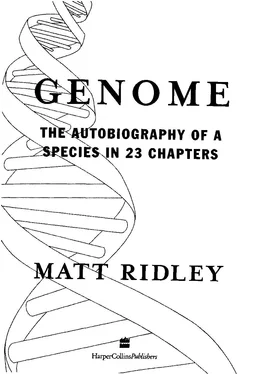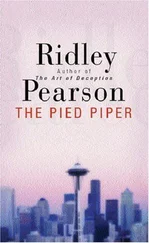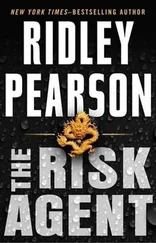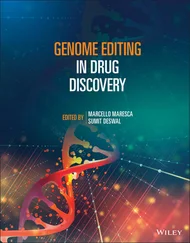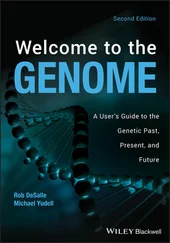Genome - Matt Ridley
Здесь есть возможность читать онлайн «Genome - Matt Ridley» — ознакомительный отрывок электронной книги совершенно бесплатно, а после прочтения отрывка купить полную версию. В некоторых случаях можно слушать аудио, скачать через торрент в формате fb2 и присутствует краткое содержание. Жанр: Старинная литература, на английском языке. Описание произведения, (предисловие) а так же отзывы посетителей доступны на портале библиотеки ЛибКат.
- Название:Matt Ridley
- Автор:
- Жанр:
- Год:неизвестен
- ISBN:нет данных
- Рейтинг книги:5 / 5. Голосов: 1
-
Избранное:Добавить в избранное
- Отзывы:
-
Ваша оценка:
- 100
- 1
- 2
- 3
- 4
- 5
Matt Ridley: краткое содержание, описание и аннотация
Предлагаем к чтению аннотацию, описание, краткое содержание или предисловие (зависит от того, что написал сам автор книги «Matt Ridley»). Если вы не нашли необходимую информацию о книге — напишите в комментариях, мы постараемся отыскать её.
Matt Ridley — читать онлайн ознакомительный отрывок
Ниже представлен текст книги, разбитый по страницам. Система сохранения места последней прочитанной страницы, позволяет с удобством читать онлайн бесплатно книгу «Matt Ridley», без необходимости каждый раз заново искать на чём Вы остановились. Поставьте закладку, и сможете в любой момент перейти на страницу, на которой закончили чтение.
Интервал:
Закладка:
Putting the Rous sarcoma virus through the gene-sequencer revealed that it carried a special cancer-causing gene, now known as src. Other such 'oncogenes' soon followed from other oncoviruses.
Like Ames, the virologists were beginning to realise that cancer was a disease of genes. In 1975 the world of cancer research was turned upside down by the discovery that src was not a viral gene at all. It was a gene that we all possessed, chicken, mouse and human, too. The Rous sarcoma virus had stolen its oncogene from one of its hosts.
More conventional scientists were reluctant to accept that cancer was a genetic disease: after all, except in rare cases, cancer was not inherited. What they were forgetting was that genes are not confined to the germline; they also function during an organism's lifetime in every other organ. A genetic disease within an organ of the body, but not in the reproductive cells, could still be a genetic disease. By 1979, D N A taken from three kinds of tumour had been used to induce cancerous growth in mouse cells, thus proving that genes alone could cause cancer.
It was obvious from the start what kinds of genes oncogenes would turn out to be - genes that encourage cells to grow. Our cells possess such genes so that we can grow in the womb and in childhood, and so that we can heal wounds in later life. But it is vital that they are switched off most of the time; if they are jammed on, the result can be disastrous. With 100 trillion body cells, and a fairly rapid turnover, there are plenty of opportunities for oncogenes to be jammed on during a lifetime, even without the encouragement D E A T H 2 3 5
of mutation-causing cigarette smoke or sunlight. Fortunately, however, the body possesses genes whose job is to detect excessive growth and shut it down. These genes, discovered first in the mid-1980s by Henry Harris at Oxford, are known as tumour-suppressor genes. Tumour suppressors are the opposite of oncogenes. Whereas oncogenes cause cancer if they are jammed on, tumour-suppressor genes cause cancer if they are jammed off.
They do their job by various means, the most prominent of which is to arrest a cell at a certain point in its cycle of growth and division, then release it from arrest only if it has all its papers in order, so to speak. To progress beyond this stage, therefore, a tumour must contain a cell that has both a jammed-on oncogene and a jammed-off tumour-suppressor gene. That is unlikely enough, but it is not the end of the matter. To escape and grow uncontrollably, the tumour must now pass by an even more determined checkpoint, manned by a gene that detects abnormal behaviour in a cell and issues an instruction to different genes to dismantle the cell from the inside: to commit suicide. This is TP53.
When TP53 was first discovered, by David Lane in Dundee in 1979, it was thought to be an oncogene, but it was later recognised to be a tumour suppressor. Lane and his colleague Peter Hall were discussing TP53 in a pub one day in 1992 when Hall offered his arm as a guinea pig for testing if TP53 was a tumour suppressor. Getting permission to perform an animal test would take months, but an experiment on a human volunteer could be done right away. Hall repeatedly scarred a small part of his arm with radiation and Lane took biopsies over the succeeding two weeks. They showed a dramatic rise in the level of p53, the protein manufactured from TP53, following the radiation damage, clear evidence that the gene responded to cancer-causing damage. Lane has gone on to develop p53 as a potential cancer cure in clinical trials; the first human volunteers will be taking the drug as this book is being published.
Indeed, so rapidly has cancer research in Dundee grown that p53
is now bidding to be the third most famous product of the small Scottish city on the Tay estuary, after jute and marmalade.
2 3 6 G E N O M E
Mutation in the TP53 gene is almost the defining feature of a lethal cancer; in fifty-five per cent of all human cancers, TP53 is broken. The proportion rises to over ninety per cent among lung cancers. People born with one faulty version of TP53 out of the two they inherit, have a ninety-five per cent chance of getting cancer, and usually at an early age. Take, as an example, colorectal cancer.
This cancer begins with a mutation that breaks a tumour-suppressor gene called APC. If the developing polyp then suffers a second mutation jamming on an oncogene called RAS, it develops into a so-called 'adenoma'. If it then suffers a third mutation breaking another, unidentified tumour-suppressor gene, the adenoma grows into a more serious tumour. And now comes the danger of a fourth mutation, in the TP53 gene, which turns the tumour into a full carcinoma. Similar multi-hit models apply to other kinds of cancer, with TP53 often coming last.
You can now see why detecting cancer early in the development of the tumour is so important. The larger a tumour becomes, the more likely it is to suffer the next mutation, both because of general probability and because the rapid proliferation of cells inside the tumour can easily lead to genetic mistakes, which can cause mutations. People who are especially susceptible to certain cancers often carry mutations in 'mutator' genes, which encourage mutation generally (the breast cancer genes BRCA1 and BRCA2, discussed in the chapter on chromosome 13, are probably breast-specific mutator genes), or because they already carry one faulty version of a tumour-suppressor gene. Tumours, like populations of rabbits, are prone to rapid and strong evolutionary pressures. Just as the offspring of the fastest-breeding rabbits soon dominate a rabbit warren, so the fastest dividing cells in each tumour come to dominate at the expense of more stable cells. Just as mutant rabbits that burrow underground to escape buzzards soon come to dominate at the expense of rabbits that sit in the open, so mutations in tumour-suppressor genes that enable cells to escape suppression soon come to dominate at the expense of other mutations. The environment of the tumour is literally selecting for mutations in such genes as the external environ-D E A T H 2 3 7
ment selects rabbits. It is not mysterious that mutations eventually show up in so many cases. Mutation is random, but selection is not.
Likewise, it is now clear why cancer is a disease that very roughly doubles in frequency every decade of our lives, being principally a disease of old age. In somewhere between a tenth and a half of us, depending on the country we live in, cancer will eventually get round the various tumour-suppressor genes, including TP53, and will inflict a terrible and possibly fatal disease upon us. That this is a sign of the success of preventative medicine, which has eliminated so many other causes of death at least in the industrialised world, is little consolation. The longer we live, the more mistakes we accumulate in our genes, and the greater the chance that an oncogene may be jammed on and three tumour-suppressor genes jammed off in the same cell. The chances of this occurring are almost unimaginably small, but then the number of cells we make in our lifetimes is almost unimaginably large. As Robert Weinberg has put it:5 'One fatal malignancy per one hundred million billion cell divisions does not seem so bad after all.'
Let us take a closer look at the TP53 gene. It is 1,179 'letters'
long, and encodes the recipe for a simple protein, p53, that is normally rapidly digested by other enzymes so that it has a half-life of only twenty minutes. In this state, p53 is inactive. But upon receipt of a signal, production of the protein increases rapidly and destruction of it almost ceases. Exactly what that signal is remains shrouded in mystery and confusion, but damage to D N A is part of it. Bits of broken D N A seem somehow to alert p53. Like a criminal task force or S W A T team, the molecule scrambles to action stations. What happens next is that p53 takes charge of the whole cell, like one of those characters played by Tommy Lee Jones or Harvey Keitel who arrives at the scene of an incident and says something like: ' F B I : we'll take over from here.' Mainly by switching on other genes, p53 tells the cell to do one of two things: either to halt proliferation, stop replicating its D N A and pause until repaired; or to kill itself.
Читать дальшеИнтервал:
Закладка:
Похожие книги на «Matt Ridley»
Представляем Вашему вниманию похожие книги на «Matt Ridley» списком для выбора. Мы отобрали схожую по названию и смыслу литературу в надежде предоставить читателям больше вариантов отыскать новые, интересные, ещё непрочитанные произведения.
Обсуждение, отзывы о книге «Matt Ridley» и просто собственные мнения читателей. Оставьте ваши комментарии, напишите, что Вы думаете о произведении, его смысле или главных героях. Укажите что конкретно понравилось, а что нет, и почему Вы так считаете.
